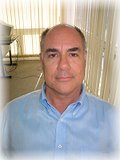Proprietary technology (based on nano-sized particles of titanium dioxide) is what makes this cement special. The technology can be applied to white or gray cement and it works like any other portland cement: it can be used in all varieties of concrete., including plaster.(Presumably, applications for mortar might be beneficial, too., although the mortar has a smaller surface area.) The only difference is that it is capable of breaking down smog or other pollution that has attached itself to the concrete substrate, in a process known as photocatalysis. As sunlight hits the surface, most organic and some inorganic pollutants are neutralized. They would otherwise lead to discolored concrete surfaces.
The titanium-based catalyst is not spent as it breaks down pollution, but continues to work. Typical products are oxygen, water, carbon dioxide, nitrate, and sulfate. Because rain washes away the pollution from the concrete surface, buildings stay cleaner and do not require chemical applications that are potentially harmful to the environment. Maintenance costs are reduced. This is true even for buildings in highly polluted locations—one noted application is the Air France headquarters at Roissy-Charles de Gaulle International Airport near Paris, a white concrete building that has remained white. Another is the Church of the Year 2000 in Rome.
Clean buildings are great: A perhaps even more astounding environmental benefit is the potential for cleaner air. Concrete products that are exposed to sunlight throughout their life, like precast building panels, pavers, and roof tiles, are especially suited to manufacture with photocatalytic cement. For instance, city streets made with special pavers are capable of reducing the pollution at its source—where it comes out of the tailpipe.
There are two major cement companies distributing this type of cement in the United States. Italcementi, the Italian parent company of Essroc Cement, originally brought this product to market. They have recently licensed Lehigh White Cement Company to produce and market the material in Europe and North America. Brand names for the white cement are TX Active® and Tiocem.



Nenhum comentário:
Postar um comentário